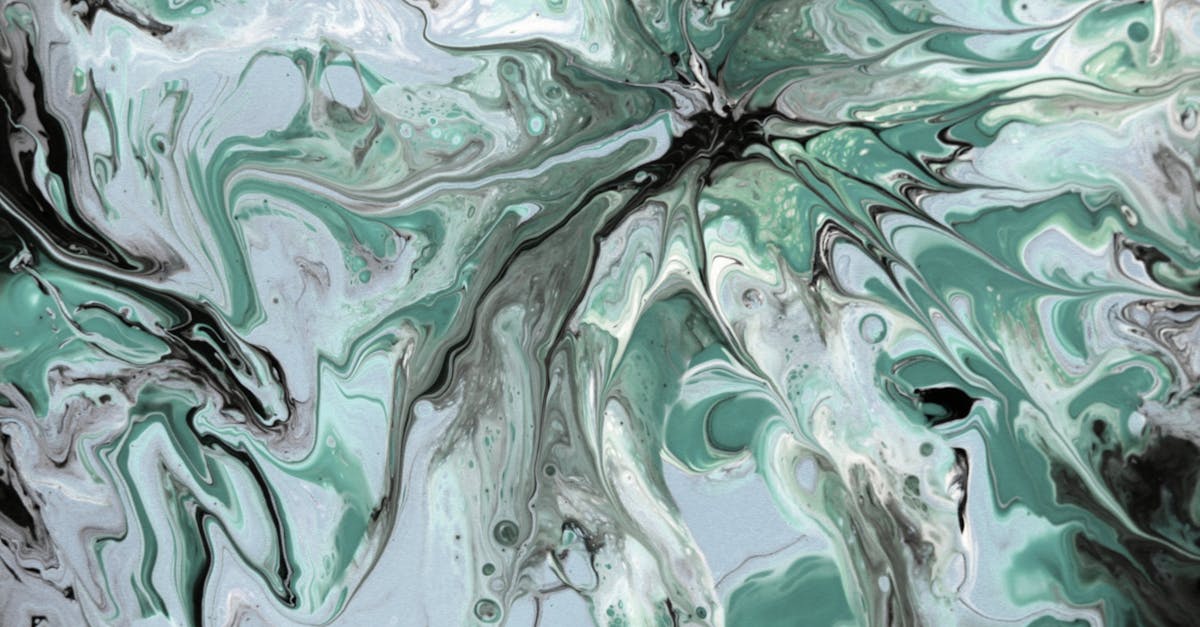This article explores the balance between warm and cool colors in modern interior design. It delves into color theory and the psychological impact of different hues on moods and spaces. Key techniques for creating a harmonious look include understanding color temperature, effective use of contrast, and the significance of neutral tones. Practical tips on applying these colors in textiles, wall colors, and furniture enhance the design experience. The article also addresses common pitfalls to avoid while mixing colors and provides advice for achieving a cohesive design, especially in small spaces and open floor plans.
Current Trends in House Painting and Remodeling
Transforming one’s living space into a personal oasis is an exciting endeavor, and current trends in house painting and remodeling are more vibrant and innovative than ever. Homeowners are increasingly seeking to express their unique styles through carefully chosen colors, textures, and materials that enhance their environments. By embracing both warm and cool colors, one can create a balance between lively energy and tranquil serenity, making every room feel inviting and personalized.
With the influence of color theory guiding design decisions, homeowners are finding the ideal combinations that resonate with their preferences while enhancing mood and functionality. Whether it’s a cozy living room inviting friends to gather or a calm bedroom serving as a retreat, the interplay between color and space becomes crucial in achieving cohesive and aesthetically pleasing interiors. Additionally, innovative materials and modern techniques are paving the way for truly remarkable transformations. Explore the exciting possibilities of current trends to elevate your home, making it a true reflection of your lifestyle and taste.

| Characteristic | Details |
|---|---|
| Emotional Impact | Warm colors evoke energy and warmth, while cool colors promote calm and relaxation. |
| Spatial Perception | Cool colors tend to make a space feel larger, whereas warm colors create an intimate atmosphere. |
| Color Combinations | A balanced mix of warm and cool colors adds visual interest and depth. |
| Color Theory Usage | Understanding color theory enables effective combinations that enhance harmony within a room. |
| Lighting Effects | Both natural and artificial lighting affects how colors are perceived, influencing design choices. |
| Textural Harmony | Complementing colors with varied textures helps build a cohesive and inviting space. |
| Accessorizing with Color | Using art and decor elements that merge warm and cool tones enhances overall design appeal. |
Current Trends in House Painting and Remodeling
Understanding the Play of Color in Interior Design
Transforming a living space involves more than just a fresh coat of paint; it requires an understanding of how color impacts mood and functionality. Mixing warm and cool colors can help achieve a balanced and inviting atmosphere. Warm colors such as red, orange, and yellow exude energy and warmth. In contrast, cool colors like blue, green, and purple promote calm and relaxation. By strategically incorporating both types of hues, homeowners can create spaces that are not only visually appealing but also conducive to the activities that occur within those areas.
Creating a Harmonious Atmosphere
When selecting a color palette, incorporating neutral tones helps bridge the gap between warm and cool colors, allowing both to coexist beautifully. For example, a neutral wall can serve as a canvas, enabling warm and cool accents to take center stage without overwhelming the senses. Homeowners can experiment with various combinations, such as using warm shades in social areas like living rooms and kitchens, and cooler tones in more private spaces such as bedrooms and offices.
Basics of Color Theory in Interior Design
Color theory is a fundamental principle that guides interior design. It encompasses understanding color temperature and how it influences the overall ambiance of a space. Color temperature is categorized into warm and cool colors.
- Warm Colors: These include shades like red, orange, and yellow, which evoke feelings of comfort and energy.
- Cool Colors: Comprising blues, greens, and purples, these colors create a calming atmosphere, often making rooms feel larger.
Balancing these temperatures is crucial for creating depth and interest. Effective color palettes typically feature a primary color with complementary shades. For example, a predominant warm hue combined with cool accents can yield a vibrant yet harmonious environment.
Color Psychology in Interior Design
The psychology of color plays a significant role in how spaces feel. Different colors can inspire various emotions and responses. Here’s a closer look at how colors can shape the mood within your home:
| Color Type | Mood Created | Best Used In |
|---|---|---|
| Warm | Energetic, Inviting | Living Rooms, Kitchens |
| Cool | Calm, Peaceful | Bedrooms, Offices |
Planning Your Color Palette
A well-planned color palette is essential for defining the mood and style of a space. One effective approach is to begin by selecting a dominant color. This primary shade sets the tone for the entire area.
After establishing a dominant color, homeowners can choose complementary colors that enhance the main color without overpowering it. For instance, a bright blue may be complemented by warm orange accessories, with neutral tones serving as a backdrop to maintain visual balance.
Additionally, considering the balance of warm and cool tones is pivotal. A general guideline is to use a dominant hue from one temperature range and support it with 20% of the opposite temperature. This balance creates visual intrigue while ensuring harmony within the space.
Color Coordination Techniques
Effective color coordination can significantly enhance the visual appeal of any interior environment. Here are two crucial techniques for harmonizing warm and cool colors:
Using Contrast Effectively
Contrast is key in achieving a dynamic look within a space. Pairing warm colors like red with cool counterparts like blue can create striking visual interest. For example, an accent wall painted in a bold red could perfectly complement softly styled blue furniture. This contrast not only adds character but also helps define various areas within an open floor plan.
Color Flow Through Spaces
Creating a consistent color flow throughout different areas of a home promotes a sense of cohesion. Transitioning from warm hues in one room to cooler shades in the next establishes harmony within the home. For instance, a living room adorned with warm golds can seamlessly lead to a dining area featuring tranquil greens. Transitional colors, such as soft taupe, can act as bridges, enhancing the visual experience as one moves through the home.
Implementing Colors in Decor
Integrating warm and cool colors into decor elements is essential for achieving a balanced atmosphere. There are several effective methods to do this:
Textiles and Fabrics
Textiles are a wonderful way to add warmth and texture to a room. Items like curtains, cushions, and rugs can significantly influence the overall ambiance. For example, warm-colored fabrics, such as rich reds or oranges, can be used alongside cooler shades like blue and green textiles to create a welcoming environment. Layering fabrics of different textures further enhances visual interest.
Wall Colors and Accents
Wall colors play a critical role in establishing mood. Lighter cool colors can offer a calming backdrop, while warm tones can instill a sense of comfort. For instance, painting one wall a warm shade can spotlight a focal area, while cooler shades on adjacent walls help to create balance.
Furniture and Woodwork
When choosing furniture, consider how warm woods like oak can work in tandem with cooler colors. For example, pairing a navy sofa with warm orange pillows yields a striking contrast that invites conversation. Mixing furniture styles can add personality while maintaining visual harmony.
Lighting and Its Impact on Colors
Lighting significantly affects how colors present themselves in a space. Both natural light and artificial sources can alter the appearance of warm and cool tones. For instance, cool colors may seem brighter in ample light, while under dim conditions, they could appear muted. On the flip side, warm colors can exude an inviting glow in softer lighting.
- Test Colors: Always check paint colors in different lighting settings to gauge their true appearance.
- Use Dimmer Switches: These allow dynamic adjustments to light levels, enhancing or softening colors as needed.
- Layer Lighting: Combining ambient and task lighting creates depth that enhances both warm and cool shades.
Accessorizing with Color
Accessorizing is the final touch in implementing color effectively. Art pieces and decorative elements can either stand out or blend into the overall design scheme:
Art and Decorative Elements
Art serves as a focal point that can harmonize a room by integrating both warm and cool colors. For example, a vibrant painting featuring shades of red and orange can beautifully contrast with cool-toned walls. Selecting appropriate frames, whether warm-toned woods or sleek cool metals, adds yet another layer of depth.
Plants and Natural Elements
Incorporating plants can breathe life into any room. Greenery often carries a cool aura, but pots in warmer shades, such as terracotta, can create a beautiful balance. Furthermore, using natural materials like wood adds warmth, enhancing the overall design.
Avoiding Common Mistakes in Color Mixing
While experimenting with color can yield stunning results, there are common pitfalls to avoid:
- Ignoring Undertones: Mismatched undertones can create a disjointed look. Each color has undertones that should complement one another.
- Overusing One Palette: Limiting to one temperature can constrain creativity. A balanced palette provides harmony and visual interest.
- Neglecting Neutrals: Neutral colors act as a bridge between warm and cool tones, softening contrasts.
- Skipping Sample Tests: Always evaluate how colors appear together in the actual space.
- Rushing the Process: Take the time to discover the right balance; designing spaces is a creative journey.
Tips for Small Spaces and Open Floor Plans
Utilizing color effectively can also help small areas feel more spacious. Here are practical tips to enhance small rooms and open floor plans:
- Choose Light Colors: Soft whites and pale hues create an airy feel, reflecting light to make rooms appear larger.
- Create a Color Flow: Utilizing similar colors in adjoining areas ensures a warm and inviting experience.
- Add Neutrals: Neutrals bridge gaps between warm and cool colors, promoting cohesion.
- Use Accent Walls: A bold accent wall can intrigue the eye without overwhelming the space.
- Incorporate Mirrors: Mirrors reflect light and color, amplifying the sense of space.

Transform Your Home with Expert Painting and Remodeling!
Ready to elevate your living space? Our professional team specializes in innovative painting and remodeling solutions tailored to your unique style. Experience a vibrant transformation that enhances comfort and beauty in your home. Contact us today to turn your vision into reality!
Current Trends and Tips for Home Painting and Remodeling
Key Trends in Home Design
- Warm and Cool Color Combinations
Mixing warm tones, such as reds and yellows, with cool hues like blues and greens creates a vibrant yet balanced atmosphere. This trend enhances social spaces while maintaining tranquility in private areas.
- Textured Finishes
Utilizing textured wall finishes, such as stucco or Venetian plaster, is becoming increasingly popular. These add depth and interest to walls and can enhance the character of a room.
- Eco-Friendly Materials
There is a growing emphasis on sustainable and eco-friendly materials. Homeowners are opting for non-toxic paints and recycled materials to minimize environmental impact.
- Accent Walls
Creating an accent wall using bold colors or unique wallpaper can serve as a focal point in any room, offering personality and flair without overwhelming the space.
Practical Tips for Painting and Remodeling
- Choose a Dominant Color
When planning the color scheme, select a dominant color that reflects personal style and contributes to the desired mood of the room.
- Incorporate Neutrals
Using neutral shades can serve as a backdrop, allowing warmer and cooler colors to pop while maintaining a cohesive look throughout the space.
- Test Paint Colors
Always test paint colors in the actual space and under various lighting conditions to ensure they look as intended before making a final decision.
- Utilize Lighting Effectively
Natural and artificial lighting significantly affects how colors appear. Layered lighting solutions can enhance both warm and cool tones effectively.
- Mix Textures
Combining different textures through textiles, furniture finishes, and decorative elements can enhance visual interest and depth in a room.
- Balance Color Temperatures
A good rule of thumb is to use about 80% of one color temperature (warm or cool) and 20% of the opposite. This balance maintains harmony while adding depth.
- Consider Color Flow
In open floor plans, maintaining a cohesive color flow from one room to another ensures a seamless transition and connected feel across spaces.
Frequently asked questions
Glossary of Key Terms
- Color Temperature
- The classification of colors as warm or cool based on their inherent qualities. Warm colors create feelings of energy, while cool colors evoke calmness and serenity.
- Warm Colors
- Colors that include red, orange, and yellow, known for providing an inviting and cozy atmosphere, often associated with sunlight and warmth.
- Cool Colors
- Colors like blue, green, and purple that promote tranquility and reduce stress, frequently reminding viewers of natural elements such as water and sky.
- Color Wheel
- A circular representation of colors that illustrates how colors relate to each other, including primary, secondary, and tertiary colors.
- Complementary Colors
- Colors that are opposite each other on the color wheel, creating a striking contrast and visual interest when used together in design.
- Analogous Colors
- Colors that sit next to each other on the color wheel, creating a harmonious and subtle look that is often used to unify a design scheme.
- Color Palette
- A selection of colors chosen for a specific design project, including dominant and complementary colors, that dictates the mood and style of a space.
- Neutral Tones
- Colors such as beige, gray, and white that serve as a backdrop in interior design, helping to blend warm and cool colors and create balance.
- Color Psychology
- The study of how colors affect human emotions and behaviors, playing a crucial role in selecting colors for various spaces to achieve desired atmospheres.
- Accent Wall
- A single wall painted in a bold color that draws attention, creating a focal point within a room while allowing other walls to remain lighter and less imposing.
Conclusion
Understanding the balance between warm and cool colors is crucial in modern design. These colors set the tone of a space, influencing mood and interactions. By harmonizing these color temperatures, homeowners can create environments that feel both inviting and tranquil. The interplay of color theory, effective application techniques, and attention to detail in accessories can lead to beautifully designed spaces that reflect personal style. Exploring these concepts in your own home can transform areas into vibrant retreats.
Understanding Color Temperature
Incorporating warm and cool colors effectively requires understanding their emotional impacts. Warm colors like red and orange evoke energy and vigor, while cool colors such as blue and green inspire calmness and tranquility. Begin by identifying the atmosphere desired in each room.
Creating a Balanced Color Palette
A harmonious space often utilizes a mix of warm and cool colors. Here are key recommendations for creating balance:
- Utilize Neutrals: Incorporate neutral tones like beige or gray to bridge warm and cool colors, allowing them to coexist without clashing.
- Mix Temperatures: Aim for an 80-20 ratio of dominant to supporting colors. For example, a warm beige with cool gray accents offers depth while maintaining harmony.
- Test Color Combinations: Always sample colors in natural light before committing, as daylight can alter perceptions substantially.
Implementing Color in Different Areas
Different rooms serve unique purposes and should reflect this in color choices:
- Living Spaces: Create warmth in living areas with bright, warm colors while balancing with cool-toned furniture or decor.
- Bedrooms: For restful environments, use soft, cool colors as wall paint and warmer accents through fabrics.
- Shared Spaces: In open floor plans, choose a warm base color in common areas while integrating cooler shades in adjacent rooms for a seamless transition.
Accessorizing Thoughtfully
Accessories play a vital role in enhancing the color scheme:
- Layer Textiles: Combine warm-colored throws with cool-toned pillows for texture and variety.
- Art and Decor: Choose artwork that incorporates both color temperatures to unify the design.
- Focus on Lighting: Use layered lighting setups to highlight warm and cool tones effectively, adapting the room’s ambiance as needed.
Transform Your Home Today!
Ready to elevate your living space with our expert painting and remodeling services? Our skilled team is dedicated to turning your vision into reality, ensuring a beautiful and personalized home that reflects your unique style. Don’t wait any longer; contact us today for a consultation and experience the magic of a refreshed space!
Sophia Torres is the creative mind behind the most dazzling transformations at TS Painting & Restoration. With a strong background in interior design and a deep passion for tropical color palettes, she has helped hundreds of clients revitalize their spaces into vibrant and inviting environments. Born in Colombia and raised in Florida, Sophia brings a unique perspective to her work, blending Latin American influences with modern design trends.
Sophia’s vision of color goes beyond the conventional. She is known for her ability to create bold and unexpected combinations that reflect Florida’s natural beauty. Her focus on color psychology and strategic use of tones allows her to transform any environment, making each project a showcase of her clients’ personal style. On her blog, she shares practical tips on how to choose colors that not only beautify but also enhance emotional well-being and create harmony in the home.
When not working, Sophia enjoys exploring art galleries, experimenting with DIY projects, and finding inspiration in Florida’s lush landscapes. For her, design isn’t just about aesthetics; it’s about creating spaces that tell a story, reflect the identity of those who live there, and evoke positive emotions. At TS Painting & Restoration, Sophia is committed to helping homeowners discover how colors can transform their homes into true havens of tranquility and beauty.


